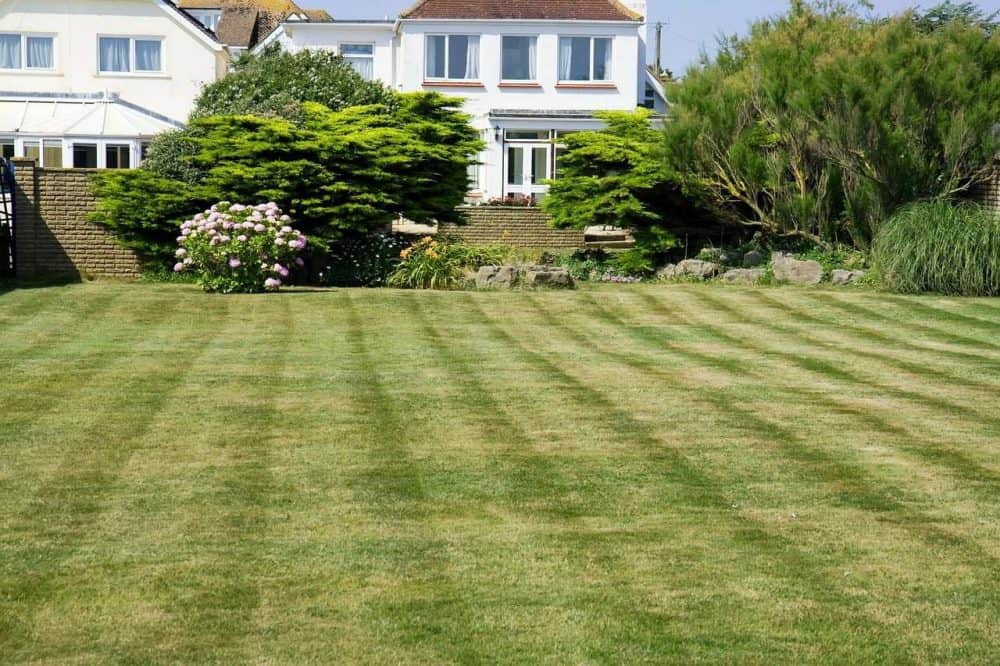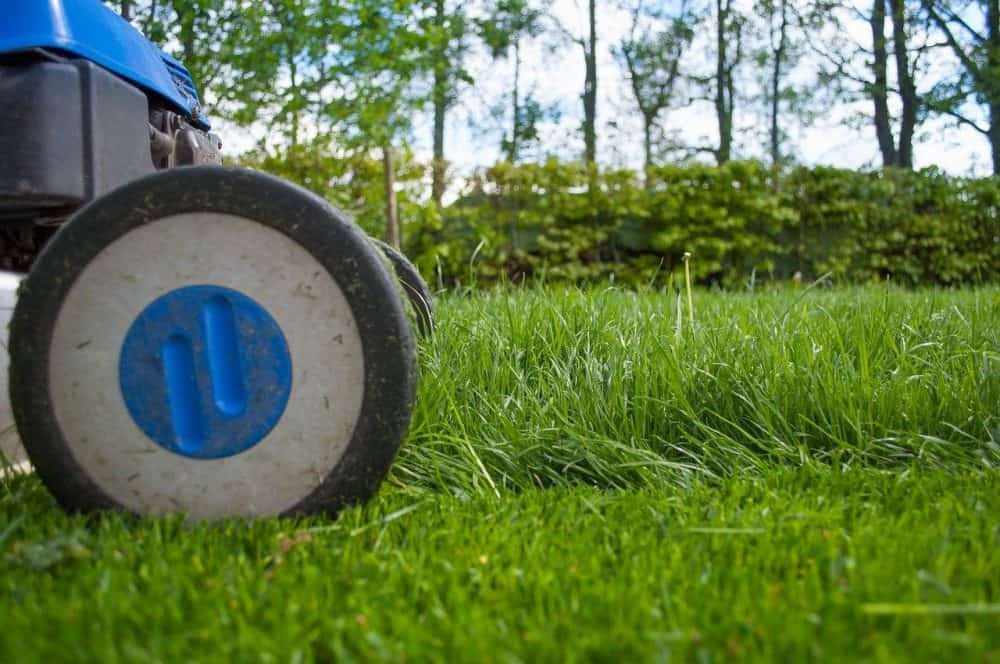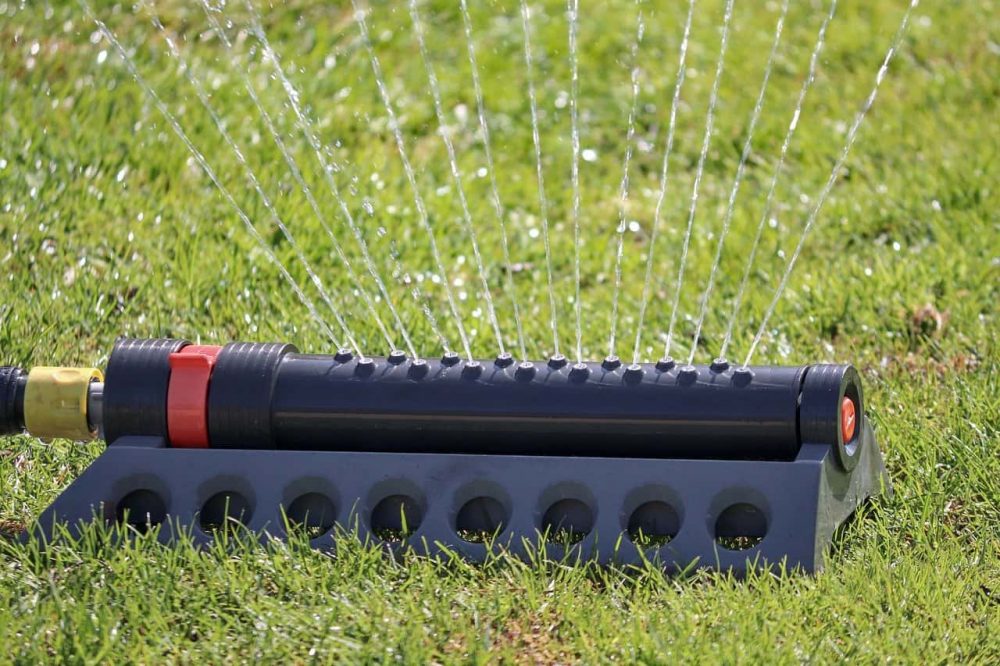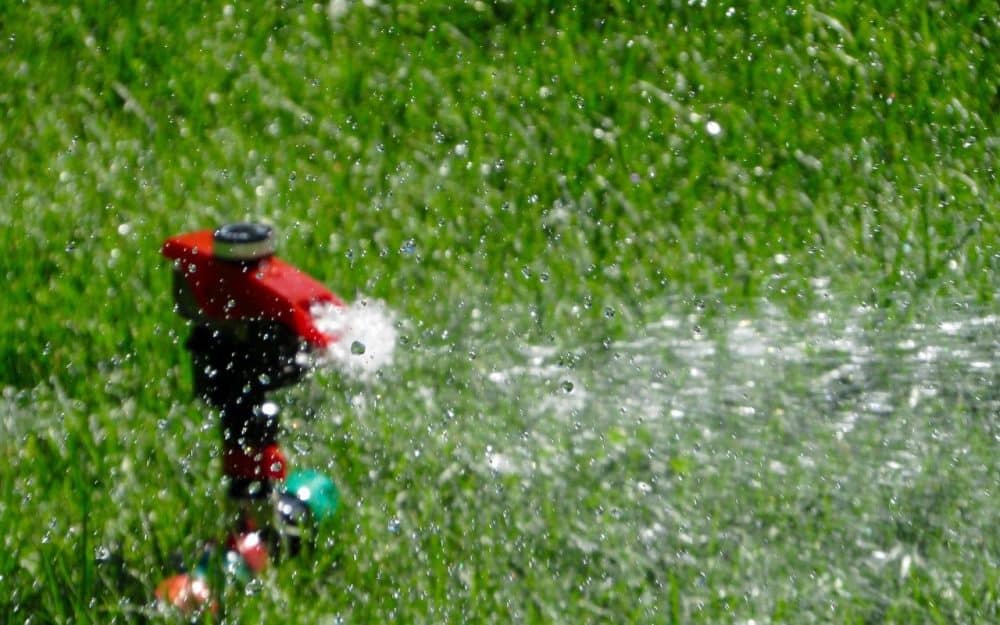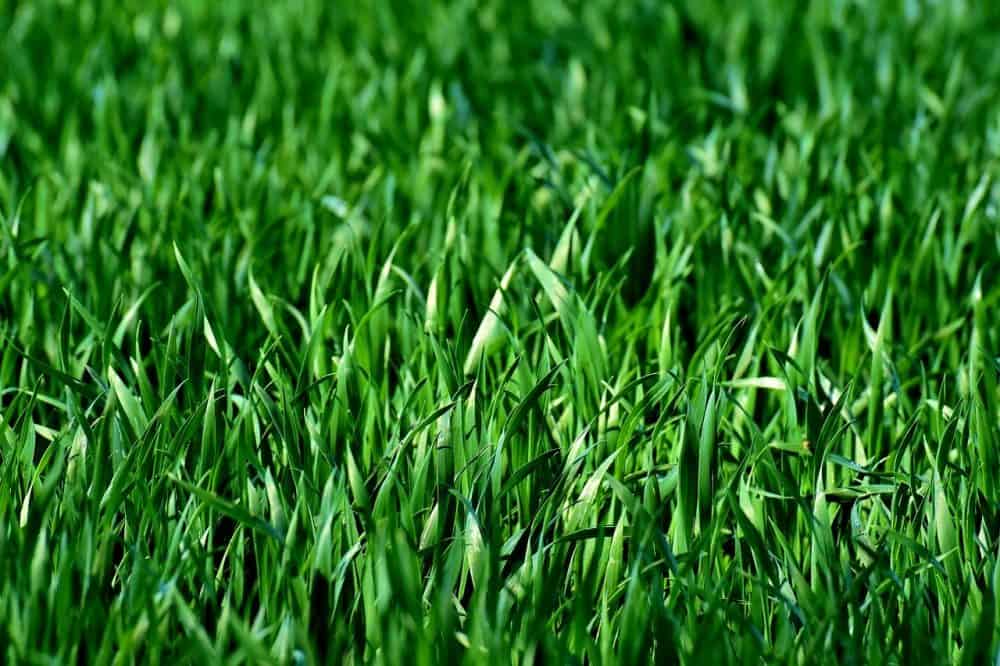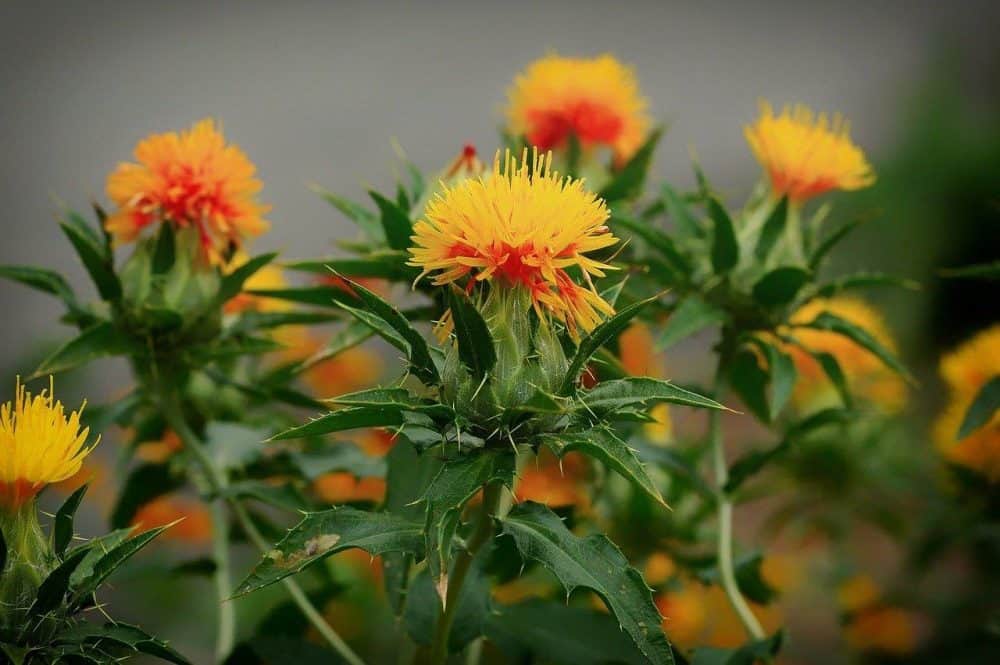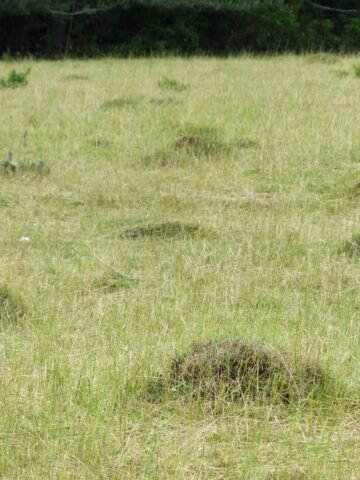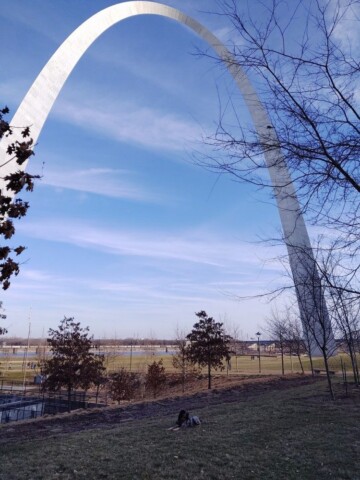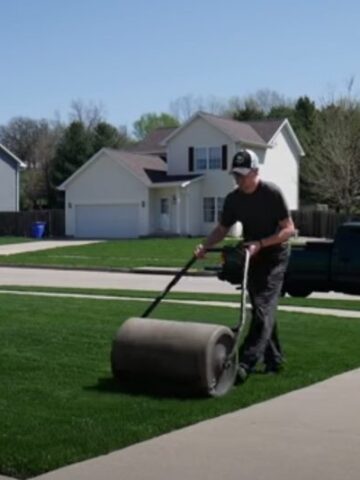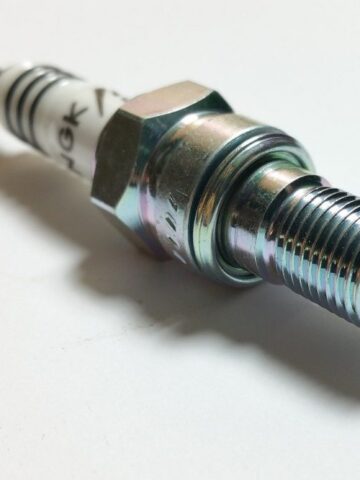Learn all the best ways to keep your lawn green in the summer heat this year.
Many are easy to start implementing today so read on!
Jump to:
Why Doesn't Your Lawn Stay Green in the Summer?
There are some very common causes of the greenness of your grass fading in the summer.
Knowing how to deal with these causes will result in greener grass.
Improper Mowing
If you wait too long to mow your lawn or you cut it too short, your grass will suffer. The lawn will get scorched and the roots won’t be protected or strong enough for grass to thrive.
Dull lawn mower blades can also tear and shred grass rather than cutting it at the proper length.
So make sure to maintain your lawn mower, and regularly sharpen and balance your lawn mower blades at least once a season.
Excessive Traffic
Even if you do everything right, too much foot traffic on your lawn can also stress and even kill your grass. Vehicle traffic will also quickly kill your grass.
The reason for this is because the added stress uproots grass, compresses it, and doesn’t let it get the sunlight that it needs.
That’s not to say that you shouldn’t walk on your lawn, just be mindful that this might be the reason your lawn is fading.
Improper Watering
If you don’t use a good watering schedule or you don’t water enough during each session, your lawn will start to fade.
This is because the roots don’t get the right amount of moisture that they need in order for the grass to be lush and green.
Less frequent, DEEP waterings are more beneficial than watering a small amount each day, which will stress the grass by never letting the moisture get all the way to the roots.
Disease or Insects
Disease and insects might seem like they’re out of your control.
At the end of the day, your lawn exists in nature and it’s hard to keep insects away from nature.
If you have brown spots even with proper watering and mowing, you can thank disease or insects.
How To Keep Your Lawn Green in the Summer Heat
If you want to keep your lawn green, you came to the right place.
Without further ado, here are some tips and tricks to have the greenest grass on your street.
Maintain a Good Watering Schedule
A good watering schedule is more than just routine watering. It has to do with how much and when you water the lawn.
Water in the Morning
The best time to water your lawn is in the morning before 10 AM but after 6 AM. At this point of the day, the sun isn’t beating up your grass yet.
The sun will evaporate the water you put on your lawn.
That might tempt you to water your lawn at night, but this doesn’t let the water absorb into your lawn. Without the sun, the grass can’t photosynthesize which is how grass becomes green.
Not only that, but watering at night can lead to fungus and disease due to oversaturation on the grass.
Watering During Dry Spells
If you’re in the middle of a drought or it hasn’t rained for a few days, it’s time to water your grass.
Over time, the moisture in the grass will get all used up and your lawn will start to die.
The best way to water during a dry spell is to emulate rainfall.
Soak the grass in intervals and water the grass infrequently and deeply. You want to saturate the root without damaging or over watering the lawn.
Use a good sprinkler that covers a wide area of lawn so you don't need to move it around constantly.
Try using a rotating sprinkler rather than a standard "back and forth" style sprinkler. Many Rotating sprinklers can cover up to 2.5x as much square footage
- POWERFUL & VERSATILE LAWN SPRINKLER: Give your yard maximum even water sprinkling with 80 PSI water pressure, 360 degree rotation, and 32.8 feet spray distance,
Check the Flow
While you’re watering, be mindful of where the water goes.
If you want to save money and time, notice any runoff. If the water is quickly flowing through your lawn and pooling up on your driveway or sidewalk, then you might be over watering your grass.
Wait about 15 minutes and try again. By doing this, you’ll give the grass enough time to absorb some water.
This means you won’t be watering your driveway.
Plant the Right Type of Grass
There are different types of grass that thrive in different climates and soil types.
If your grass doesn’t like the heat then you’ll have some rough summer months ahead of you.
Try reseeding your lawn with a different variety of grass and see if it holds up better during summer.
Many people will have good luck with a Fescue or Kentucky Bluegrass in their lawn.
Check to make sure you are using the right grass seed for your region, and planting it at the right time of year.
Fertilize at the Right Time
Fertilizer is like food for your grass. Fertilizer at the right time is a three-course meal.
You want to use a slow-release fertilizer that gives plenty of nutrients over a long period of time.
- Large capacity hopper holds up to 10,000 sq. ft. of Scotts lawn product, including grass seed and fertilizer
The process itself can take up to 8 weeks for the soil to see the results of fertilization. For that reason, it’s important to stick to a fertilization routine.
The best time to fertilize is every six weeks at about midday.
You don’t want to fertilize directly after mowing because the clippings mixed with fertilization could lead to mold or disease growing in your lawn.
Mind the Length of Your Lawn
You want to have longer grass during the summer months. It gives your grass stronger roots which means they do a better job of soaking up and retaining moisture.
Longer blades also means more storage space for each blade to retain moisture.
If the grass is too short the roots will be damaged and there’s a good chance your lawn will start to dull and die.
Plus, shorter grass needs a more frequent and lighter watering schedule.
Don’t Forget to Weed
One of the quickest ways to keep your lawn green during summer is to get rid of the weeds. Weeds will steal the sunlight and water that your grass needs to survive.
Rather than using a chemical weed killer, manually pull the weeds to avoid inadvertently killing your lawn.
You can also use a garden fork to speed up the process a little bit.
Let Your Lawn Breathe
Aerating your lawn will let your grass breathe. Your grass will have better absorption rates of water which leads to a greener lawn.
You can use a garden fork or an industrial aerator to get the job done. Be careful not to aerate too often and hurt the roots of your lawn.

